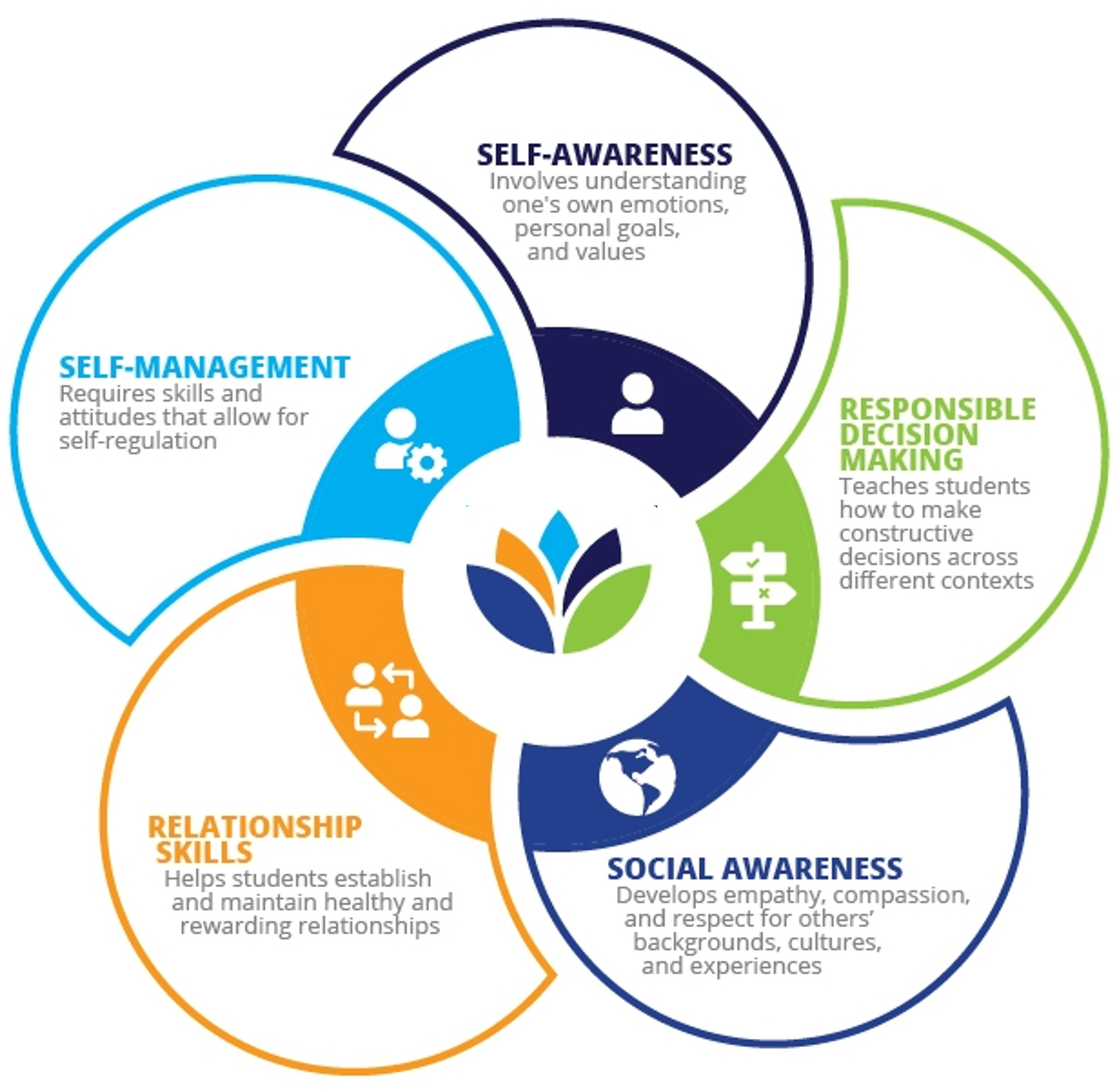What is Life Skills and Mindfulness Programming?
Life Skills and Mindfulness programming allows children and adults to acquire and effectively apply the knowledge, attitudes, and skills necessary to understand and manage emotions, establish and achieve positive goals, feel and show empathy for others, establish and maintain positive relationships, and make responsible decisions .
Catapult Learning’s Life Skills and Mindfulness programming is based on the understanding that the best learning emerges as a result of supportive relationships that make learning challenging, engaging, and meaningful. Our programs, with focuses on Counseling, Family Engagement, and Professional Development, expand students’ 21st century skills in critical thinking, collaboration, creativity, and empathy—all necessary for success in college, careers, and beyond.
Our programming is built around the following five key competencies:

Our Approach
Life Skills and Mindfulness programs address the specific needs of each school. To develop these programs, our coaches conduct a thorough needs assessment of each school to create and implement the most effective programs.
1. Needs Assessment
Designated coaches engage schools in a needs assessment process in which administrators identify Life Skills and Mindfulness strengths and gaps, and how best to support students and their families, staff, and the community. Schoolwide Life Skills and Mindfulness program implementation also requires an assessment of policies and practices, and how the school’s culture can shift to facilitate the development of key competencies for both students and the adults in the building.
2. Program Implementation
Using data from our needs assessment, we will structure a Life Skills and Mindfulness program for your school that can include the following services (based on need):
SEL surveys assessments provide diagnostic data to personalize Life Skills and Mindfulness support. We tailor surveys with Panorama, an evidence-based tool, to develop plans for personalized support
Curriculum:
- Catapult Learning Life Skills & Mindfulness Program (K-8) – Research-based programming can be added as an optional supplement
- Slumberkins (Pre K-2) – Engaging, trauma-informed curriculum to focus on developing growth mindset, strengthening executive functioning skills, and welcoming emotions to build long-lasting emotional regulation skills.
- Kids Thrive Here – Emotional Mastery Toolbox (Parent Engagement – K-8)
- Videos containing simple exercises to educate and equip families with the tools to support students at home
- Safe space to build and support school-community connections
- Short interviews with Catapult experts
- Outside resources posted for families in need of additional support
- Family workshops streamed live or prerecorded
Catapult Learning offers coaching and workshops in Life Skills and Mindfulness for educators and school leaders. They focus on culturally responsive teaching that is asset-based; places students at the center of learning; honors language, culture, and backgrounds; and simultaneously challenges and supports both students and teachers. Our PD services also focus on how teachers can cultivate their own competencies to promote self-care and better support their students.
Teacher Professional Development in SEL includes:
- Introduction to Social-Emotional Learning – For: K−12 Teachers; Instructional Leaders (up to 3 hrs)
- Modeling and Teaching Social-Emotional Skill Building – For: K−12 Teachers; Instructional Leaders (up to 3 hrs)
- Promoting Teacher Wellness and Self-Care – For: K−12 Teachers; Instructional Leaders (up to 3 hrs)
Counseling
Our Counseling Services are designed to assist students with social, emotional or behavioral issues impacting school performance. Counselors assist students with:
- Goal Setting (data driven/SMART goals)
- Applying academic and behavioral strategies
- Referrals to long term support, if needed (more than 6-8 sessions for the same presenting issue)
- Collaboration with families and school staff to support student success
- Improve equity and opportunity for all students
Watch our at-home virtual counseling solutions here.
Family Connections
We work to foster strong relationships and strengthen the ability of families to support the academic and non-academic needs of their children.
- Referral services: support families in obtaining assistance related to basic needs, including but not limited to: food assistance, mental health services, social, emotional and physical well-being
- Parent & Family workshops: equip families with practical and effective strategies and resources to help students achieve success. Workshops are provided virtually or in-person and address a wide range of topics including academic, social, and emotional development. Learn more about our Virtual Parent & Family Workshop Offerings.
- Consultations: During school closures, phone or video check-ins and consultations are available for families, teachers, and school staff to provide additional support
Life Skills and Mindfulness Effectiveness:
Contact Us to Learn More
Sources:
2 Friendzy SEL Fast Facts https://www.friendzy.co/friendzy-facts/sel-fast-facts
